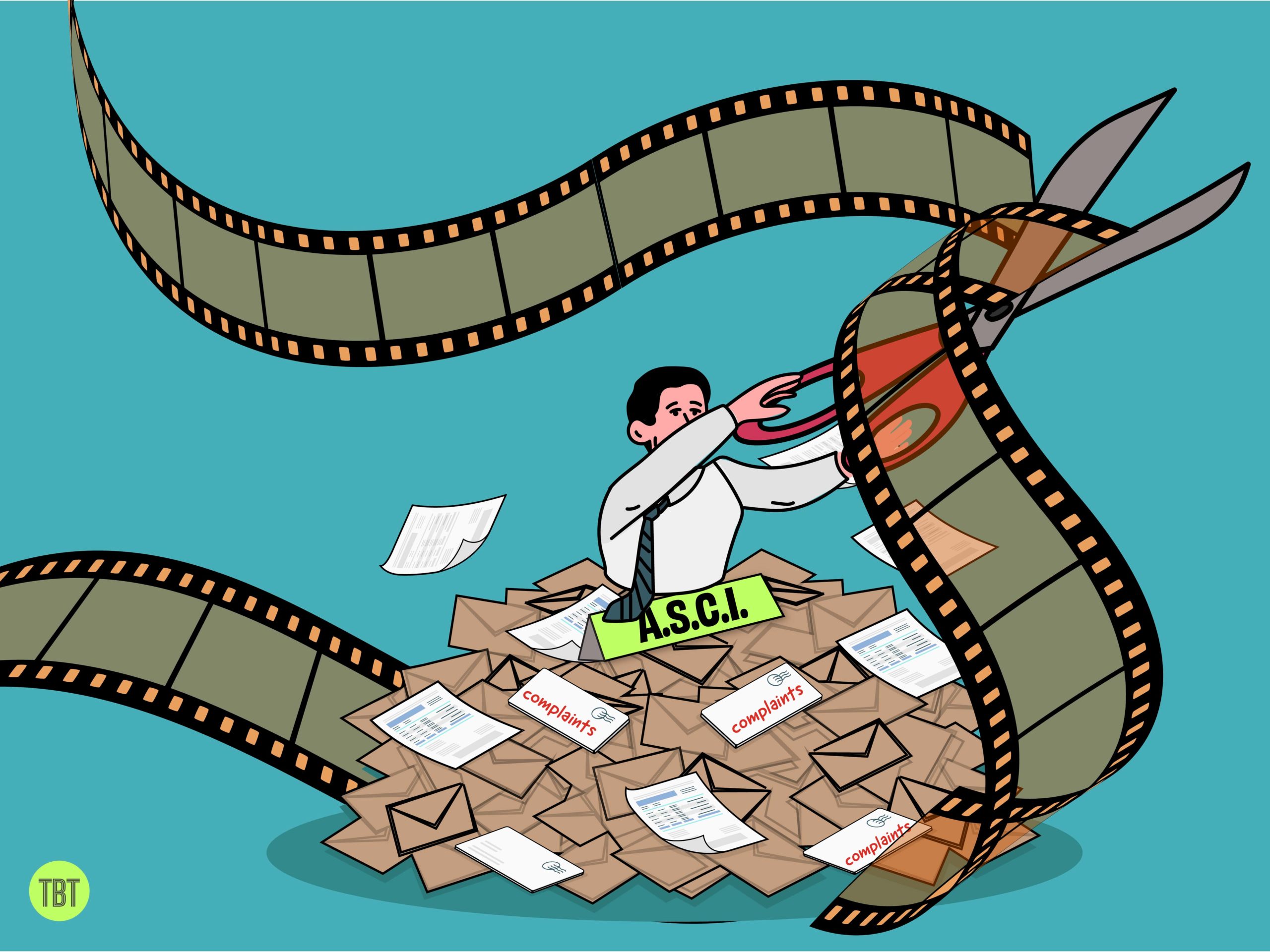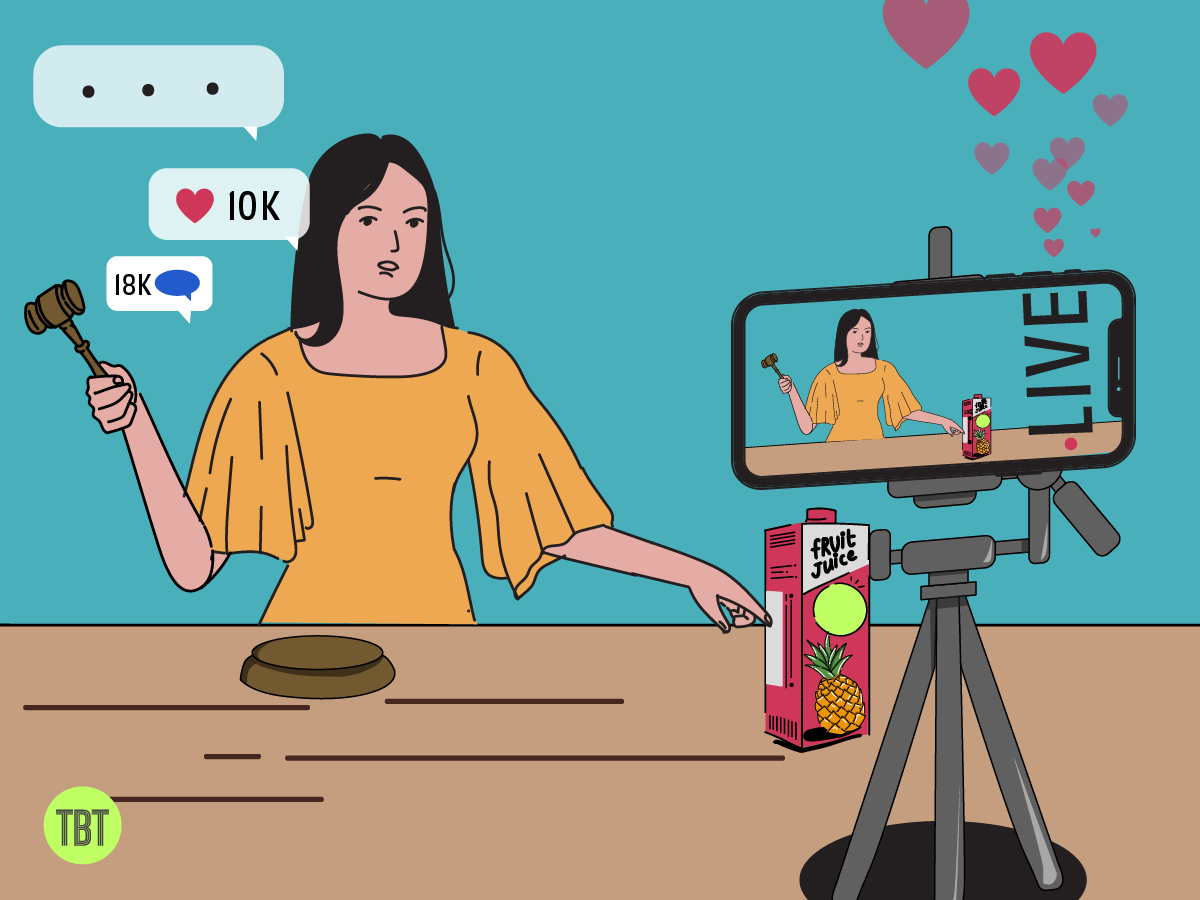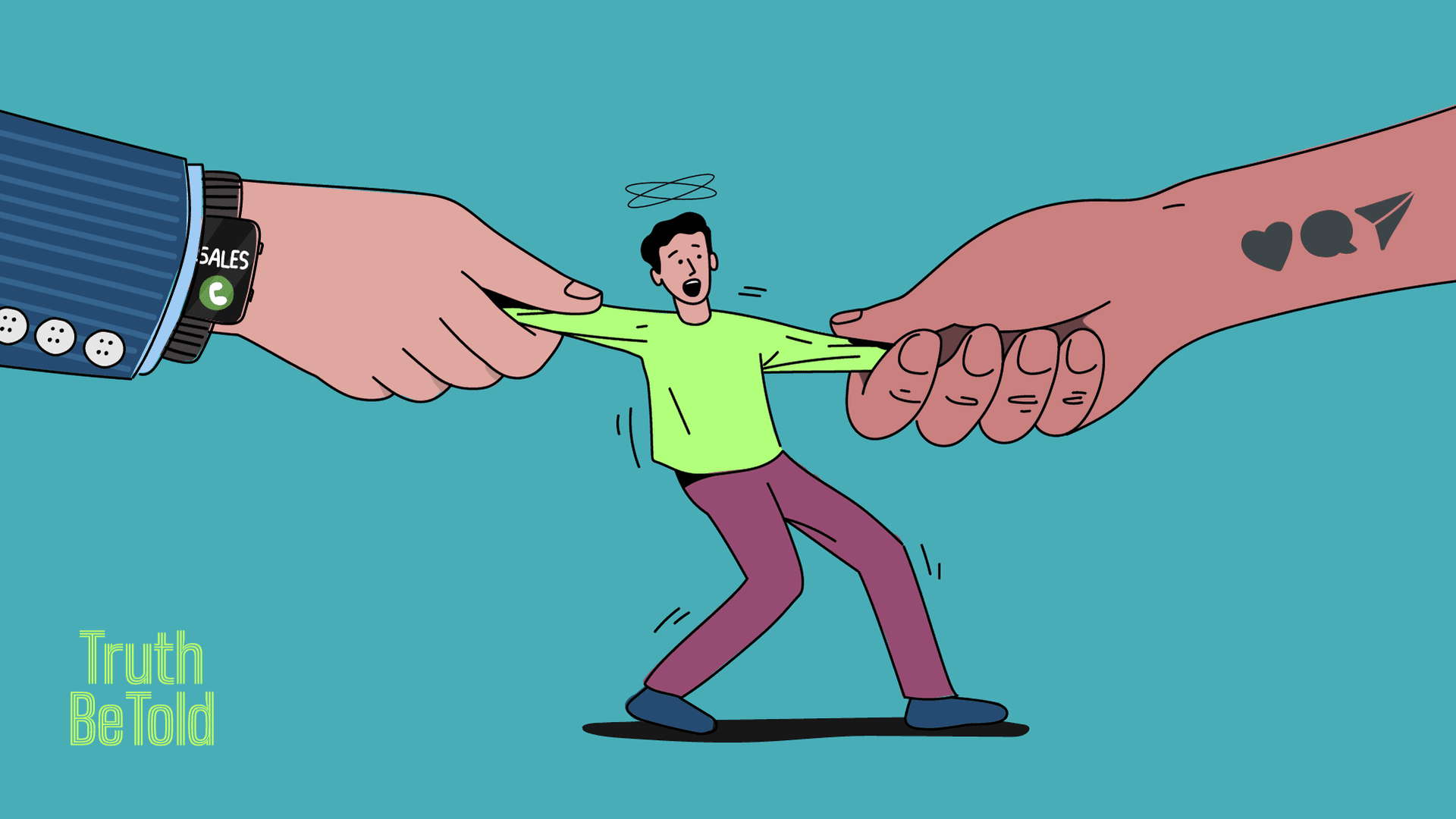Influencer vs Brands: What’s the truth
The most trustworthy source of food and
fitness journalism in the country.
Editor’s note: Today, we are publishing an opinion piece by writer and marketer Sanjana Ramachandran, where she explores the tricky world of influencers, brands, and what we should really believe.
Sanjana tackles the big questions: Can we trust brands that are getting called out left and right? How do influencer-critics fit into this puzzle? From regulatory systems to individual choices, so many challenges we consumers face in discerning truth from noise, which she sharply highlights. So, as you read this piece—and anything else you read or watch online—remember: it’s always healthy to keep a healthy dose of scepticism. Even when it comes from us.
Sanjana is working on her debut book of narrative nonfiction essays. You can read more about it on her website and social media.
– Samarth Bansal
One obvious formula to become an influencer today is to be a niche expert. Choose your domain, make Reels or Tweet threads or both at a frequency dictated by the algorithms, and watch your follower count inflate, along with your ego. Domain expertise helps, but it’s not essential.
The seeming ease of making this a career has put influencing on everybody’s bucket list. (It may also be the opportunity to do “impactful” and “uplifting” work, akin to doctors, firemen, and other essential workers.)
A beacon in the influencing world is The Liver Doc, or Dr. Cyriac Abby Philips. This hepatologist gained fame for his critical takes on alternative medicinal techniques like Ayurveda and homoeopathy.
However, last week he found his X (formerly Twitter) account (@TheLiverDr) suspended overnight after Himalaya Wellness issued an injunction against him.The wellness brand claimed Philips’ posts about their flagship product, Liv52, were defamatory and false and led to a drop in sales.
He has been in similar situations before. A few years ago, he was a thorn in Herbalife’s side, the brand launching a crusade to get his published paper retracted. It claimed that a young Indian woman died of liver failure after using the supplement company’s products.
Concerned consumers accused brands like Himalaya of harassing critics like Dr Philips and using their influence to suppress free speech.
It’s a pattern that reveals a core conflict affecting consumers today: when brands you’ve used for years are being called out by influencers cropping up everywhere, whom do you trust? What is the truth?
Navigating our increasingly volatile and opaque media landscape is no mean feat —especially when everyone involved, critics included, has multiple incentives behind what they do..
As a writer, a marketer, and a consumer at once, I couldn’t help but see these multiple sides to the spate of such cases that have recently cropped up. My experience on large-scale FMCG brands has taught me that brands and advertisers spend crores to craft their version of the truth, and get them past stringent laws before their ads are aired to millions of viewers.
Meanwhile, as a consumer and a writer, it is also plain to see the modern influencer-critic’s steep route to success, in a competitive digital environment that rewards the loudest, harshest opinions, their correctness aside. And then there are the challenges that any government or regulatory body has to contend with in dealing with these.
But unpacking these plural incentives can lead us closer to the whole truth.
🤳 Share this with your favorite influencer
There are three key elements to understand about the laws and regulations governing advertising in India, which set the parameters for what brands can and cannot claim.
Firstly, we have the Consumer Protection Act (2019). This is one of the principal laws aimed at protecting consumers from misleading ads.
These could involve ‘false descriptions of a product or service’, ‘false guarantees’, or ‘deliberately not revealing essential information about a product’.
However, there’s a catch: although this law exists, it’s not as if the government actively reviews ads for misleading content. The sheer volume of ads makes that impractical and costly, especially given the exponential increase in advertising today.
For any checks to occur, someone has to report a specific ad as misleading. In other words, someone has to alert the authorities about a problematic claim, at which point a system swings into action. If no complaint is made, the ad may go unchecked for its truthfulness.

The ASCI looks into ads after a complaint has been made
When an ad has been flagged, the Advertising Standards Council of India (ASCI) works to evaluate the case. This is a not-for-profit self-regulatory body aiming to “maintain the public’s confidence in advertising.” ASCI also offers services and guidelines to help brands clear their ads before they are aired. But once a complaint has been raised, ASCI assesses the ad from the consumer’s perspective to see if the brand’s claims could indeed be misleading.
To understand more, I spoke with Manisha Kapoor, the CEO of ASCI. She told me about a recent case involving a biscuit brand, which claimed that ‘the energy of four biscuits equals one glass of milk’.
“Although the brand was technically correct in terms of a kilo calorific value,” explained Kapoor, the CEO of ASCI, “for a consumer, ‘energy’ might connote several other things—the overall nutrition, the way you feel, strength and vigour, etcetera.”
So the biscuit brand was instructed to either modify or withdraw the misleading ad.
When it comes to food and beverage (F&B) products, ASCI also collaborates with independent experts to assess their claims. If the assessment reveals a discrepancy between what the brand promises and what they find, the grounds for challenge hold true. Brands have a right to respond, and the case may proceed to an independent jury composed of members from both the advertising industry and wider civil society—like lawyers, doctors, and consumer activists. The jury then decides whether the challenged ad or claim is misleading, depending on which brands may either modify or withdraw the ad, or take the matter to court.
Further, ASCI also operates in tandem with the Food Standards and Safety Authority of India (FSSAI). This body has its own code stipulating what claims a brand can make based on the ingredients in its food product.
If the code is violated, penalties can reach up to INR 10 lakhs, and actions may be taken under the 2006 Food Safety and Standards Act. (Over 170 cases of misleading ads and claims were reported by the committee over the first half of 2023.)
📚Share this with someone who is not a consumer of Truth Be Told
How this interconnected regulatory system works is best understood through a recent controversy. You’ve probably heard of Revant Hematsingka,also known as @foodpharmer, who criticised Bournvita for marketing itself as an ‘immunity-boosting’ ‘health drink’, when more than half its product formulation consisted of sugar. The video went viral, racking up 12 million views, but Bournvita popped Hematsingka’s viral party by slapping him with a legal notice, forcing him to take his post down.
According to Kapoor, Bournvita’s claims actually conformed to the FSSAI code, and were also backed by its studies and research.
According to the FSSAI code, just the presence of, say, Vitamin D in a product’s ingredient list might allow the brand to claim a related benefit, such as stronger bones, stronger muscles, or better immunity. Furthermore, from the consumer’s point of view, Kapoor explained that “although one hundred grams of Bournvita may contain 50 grams of sugar, people don’t take it all in at once,” she said. “One glass of milk with two spoons of Bournvita would contain just one spoon of sugar, which is within daily limits, and may even be desired by the parent or child.”
This is the thing to understand: Brands try to make the best possible case for their product, in a manner that is as close to the truth as possible legally. So long as they back up their definition of ‘the truth’—as Bournvita did, and as Himalaya will ardently try to—brands have a tenable position, conforming to the laws of the land.
What about influencer-critics?
Shortly after Hematsingka’s critical video of Bournvita, the National Commission For Protection of Child Rights, another government body discovered some issues with Bournvita’s claims and packaging. In a triumphant reel called “The Indian Health Revolution Begins”, Hematsingka congratulates himself and his viewers for heralding this change, even though most of what Bournvita was later pulled up for was different from what Hematsingka criticised them for.
In another recent video, Hemasingka advises viewers to reconsider consuming Diet Coke because it contains the artificial sweetener Aspartame. Also known as ENS 951, Aspartame has been in the news several times for potential health concerns, although these have been hotly contested and the sweetener declared safe for routine consumption repeatedly.
Social media provides room for anyone angling something to say, something new to point out on topical issues. And even experts may find their voice changing as they try to keep up with the constant need to grow online.

Experts sharing opinions on social media
Although Philips’, aka The Liver Doc, rationalist takes were initially attractive to many, the same people started to find his tone intolerably harsh as his following expanded. “He started attacking people and personalities instead of just their ideas,” a journalist who has followed his work since 2020 told me. “This was a turn-off for many well-meaning followers,” they said.
Still, it’s important to distinguish Dr Philips from the rest. Philips’ criticisms are grounded in scientific research, including his own published work, lending him conviction and authority that most opinionated influencers proceed without.
And in an industry as high-stakes, misunderstood, and rapidly changing as health and nutrition, it isn’t unusual to find research that substantiates both sides of any issue. While the brand works to prove claims that can position its products in the best light, the modern digital-critic-influencer tries to highlight whatever is relatively unknown—even if that version is not the entire truth either.
The average person is exposed to more ads than ever before, most of which are consumed via personal screens. The pandemic also led to a sharp rise in brands making immunity-boosting claims, causing ASCI to process 62% more ads than the previous year. Globally too, advocates have been pushing for food products to clearly define terms like ‘healthy’ and ‘all-natural’, which tend to be found on every other label today.
Given this saturated and opportunistic media environment, where real news competes with the fake, research and opinion with advertising, and the loudest, most insane voices threaten to drown out softer and more sane ones, what should one think and believe?
Sorry to be existential and profound, but I do believe that this is the fundamental question of our times, and I don’t even drink Bournvita or have liver issues (that I know of, at least). What I do have is a need to know what to think, and to trust that that comes from a place of good sense.
Ultimately, therefore, only the consumer can decide what’s in their best interests.
Perhaps you buy Bournvita for your athletically active son, who needs 3,000 kilocalories a day. For him, this milk drink might offer the right balance of taste, nutrition, and energy.
But if you’re an adult on a calorie-restricted no-sugar plan and frequent the gym to lose weight, then Bournvita is likely not an ideal “health drink” for you.
Similarly, you may spend the rest of your life avoiding Diet Coke like your last problematic situationship, but if you’re also a chain-smoker, cancer may come a-knocking anyway.
All this to say: in a world awash with persuasive messaging from actors of all sorts, and with science and media evolving quicker than our capacity to understand them, it falls upon the individual consumer to determine what’s genuinely best for them. This isn’t ideal, especially in cases such as Liv52, where expert medical confirmation has higher stakes.
But there may be a silver lining to these mounting cognitive costs of living in hyper-connected information-saturated modern society. Why, the ability to distinguish signal from noise,and the whole truth from the partial, may be our last remaining discriminating function be a blessing. It may be the only thing that prevents you from becoming an influencer yourself.
📺Copy and share this with someone who has seen an ad
